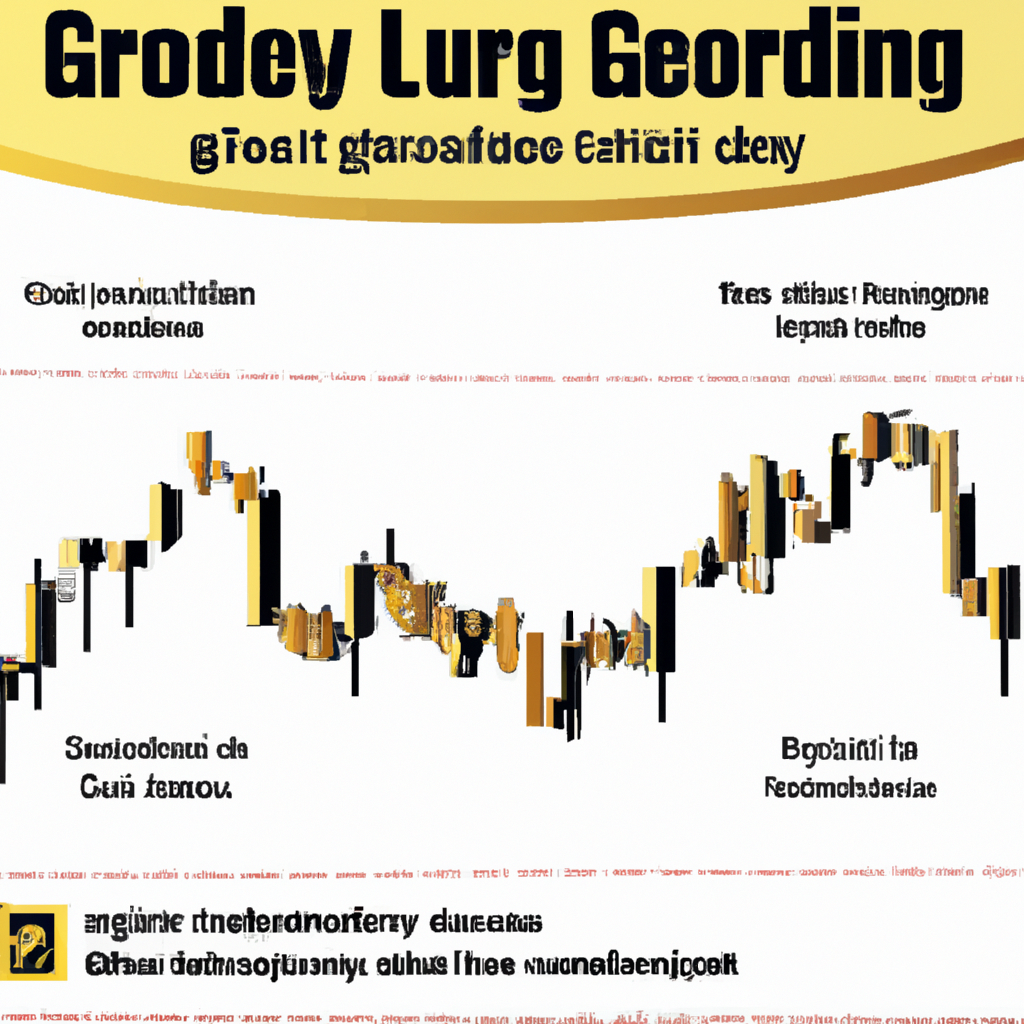As an investor, you know that timing is everything. “The Gold Market Cycle: Identifying Entry and Exit Points” offers deep insights into the complexities of the gold market – a world where identifying the best time to invest could turn potential disaster into dazzling gain. It provides a guide not just about whenever to hop on the golden ride, but also when to alight. Concentrating on making sense of the market’s unending cycles and giving you strategies for pinpointing the exact moments to make your move, it’s a treasure trove for anyone seeking to enhance their portfolio’s luster with gold.
Understanding the Gold Market Cycle
Understanding the gold market cycle is fundamental for anyone intending to invest in gold. This system, like all commodity markets, comprises both bullish and bearish periods. It is impacted by numerous factors, including fundamental aspects like supply and demand, economic and political conditions, as well as technical market indicators.
Basic concepts of the gold market cycle
The gold market cycle refers to the gold price trends, which typically involve growth periods, time of peak prices, and retracement phases. These periods are influenced by various market conditions and can be advantageously used by investors to make informed decisions about when to buy or sell their gold investments.
Importance of understanding the gold market cycle
Understanding the gold market cycle is critical for successful investing. By comprehending these cycles, you can anticipate potential market shifts, enabling you to buy low during bear markets and sell high during bull markets. Understanding the cycle can also enable you to protect your investments during downturns and potentially increase profits.
Factors affecting the gold market cycle
Several factors can impact the gold market cycle, key among them being supply and demand dynamics, economic and political conditions, central bank policies, and market speculation. Knowledge and understanding of these factors are essential in predicting potential market trends and making sound investment decisions.
The Role of Supply and Demand in the Gold Market Cycle
Just like in any other market, the basic rule of supply and demand plays a significant role in determining the gold prices.
How supply and demand influences the gold prices
A dynamic balance between supply and demand significantly influences gold prices. Essentially, when the demand for gold outstrips its supply, prices rise. Conversely, when the supply is greater than the demand, prices drop.
Major sources of gold supply
Major sources of gold supply include mining production and recycling of gold from old jewelry and electronic waste. Central banks also contribute to the supply through their gold reserves, although this has lessened since many banks have opted to stop selling their gold reserves.
Global gold demand trends
The demand for gold is mostly driven by jewelry manufacturing, investments, central bank purchases, and use in technology. Geographically, the most significant demand comes from countries like China and India due to their cultural affinity towards gold. Financial uncertainty and market volatility also tend to boost demand as investors seek safe havens for their funds.

Influence of Economic and Political Factors on the Gold Market Cycle
Economic and political factors play an influential role in the gold market cycle and significantly impact the prices of gold.
Impact of economic conditions on gold prices
In general, gold prices tend to increase during times of economic instability. As a ‘safe haven’ asset, gold becomes more attractive to investors during economic downturns or crises, leading to an increase in demand and subsequently higher prices.
The role of political stability or instability in gold prices
Political stability or instability can significantly affect gold prices. Political instability or uncertainties often result in volatile financial markets, leading many investors to invest in gold as a safer option. This increase in demand drives up gold prices.
Relevance of central bank policies in the market cycle
Central bank policies can significantly influence the gold market cycle. For instance, if a central bank decides to sell a significant portion of its gold reserves, this increased supply can result in a drop in gold prices. Conversely, central bank buying can create additional demand, pushing gold prices up.
Key Technical Indicators in the Gold Market
Technical analysis is a useful tool for predicting and understanding the gold market cycle. This involves studying chart patterns and using technical indicators to identify potential entry and exit points.
Role of technical analysis in identifying entry and exit points
Technical analysis is key in identifying potential entry and exit points in the gold market. It aids in predicting potential price movements based on historical trading activity and price levels.
Commonly used technical indicators in the gold market
Some of the commonly used technical indicators in the gold market include Moving Averages, Relative Strength Index (RSI), and Moving Average Convergence Divergence (MACD). These indicators help in identifying trend reversals and can provide good entry or exit signals.
Interpreting technical indicators
Interpreting technical indicators correctly is vital for making informed investment decisions. For instance, a falling moving average might show a bearish trend, signalling a potential exit point, while a rising moving average might indicate a bullish market, signalling a potential entry point.
Gold and Inflation: An Inverse Relationship
Gold is often seen as an inflation hedge, and it usually performs well in times of high inflation.
Understanding the inverse relationship between gold and inflation
The value of gold often increases with inflation because, unlike paper money, its supply is limited. As inflation erodes the purchasing power of paper currency, the perceived value of gold tends to increase.
Using inflation trends to identify entry and exit points in gold market
Inflation trends can be used to identify entry and exit points in the gold market. When inflation is expected to rise, it might be a good time to buy gold, while a period of staibility or deflation may provide a potential exit point.
Historical analysis of gold prices and inflation rates
Historically, there has been an inverse correlation between gold and inflation. When inflation rates are high, gold prices tend to rise as investors move towards gold to hedge against inflation.
Interpreting Gold Price Trends: Bullish Vs Bearish Market
Being able to correctly identify the market trends can assist an investor in making optimal investment decisions.
Distinguishing between bullish and bearish gold markets
A bullish gold market is characterised by rising gold prices, while a bearish market is marked by falling prices. In a bullish market, you will want to buy early and sell when the market reaches its peak, while in a bearish market, you will be looking for the best time to exit and buy back in at the market’s bottom.
Predicting gold price trends using market indicators
Market indicators such as moving averages, MACD, and RSI can help predict gold price trends. For instance, a moving average crossover might signify the beginning of a bullish trend, signaling an entry point.
Timing the market: entry and exit points in bullish and bearish markets
Timing the market can be challenging but is crucial for successful investing. Using market indicators and understanding the gold market cycle can help identify potential entry and exit points in both bullish and bearish markets.

Role of Gold ETFs in Identifying Market Cycle
Gold Exchange Traded Funds (ETFs) can provide a good indication of the gold market cycle.
Basics of Gold ETFs and how they reflect the gold market
Gold ETFs are investment funds that track the price of gold. They are traded on major stock exchanges and provide a way for investors to gain exposure to the gold market without having to deal with the storage and physical handling of gold.
Using gold ETFs trends to identify market cycle
The trends in gold ETFs can be used to identify the gold market cycle. For instance, increasing investments in gold ETFs might indicate a bullish market, while decreasing investments might suggest a bearish market.
Investment strategies involving Gold ETFs
An investment strategy involving gold ETFs might include buying ETFs during market downswings and selling during upswings. Additionally, diversification – where you spread your investments across a variety of assets, including gold ETFs – can be a solid strategy to help minimize risk.
Practical Strategies for Identifying Entry and Exit Points
Practical strategies are critical for identifying optimal entry and exit points in the gold market.
Buy and hold strategy
The buy and hold strategy involves purchasing gold and holding it for a long time, irrespective of the market fluctuations. This strategy is recommended for investors who believe in the long-term value of gold.
Market timing strategy
Market timing involves making buying or selling decisions based on predictions of market trends. This strategy requires a thorough understanding of both fundamental and technical market analysis.
Diversification strategy in relation to gold investments
Diversification involves spreading investments across a variety of assets to minimize risk. In terms of gold investments, this might mean having a mix of physical gold, gold ETFs, and gold futures in your portfolio.
Gold Market Cycle and the COVID-19 Pandemic
The COVID-19 pandemic had a tremendous impact on the global gold market, causing significant changes in the gold market cycle.
Impact of the pandemic on global gold market
The pandemic sparked a surge in gold prices due to the increased demand for safe assets amidst global economic uncertainty. Demand from central banks and investors rose significantly, driven by the lower interest rates and rising inflation concerns.
Changes in entry and exit points due to the pandemic
The pandemic-induced volatility resulted in shifts in the gold market cycle, affecting the ideal entry and exit points for gold investment. The increased uncertainty made timing the market more challenging during this period.
Long term implications for the gold market post-pandemic
Despite the short-term volatility, the long-term outlook for the gold market remains strong due to the enduring appeal of gold as a safe-haven investment. However, it’s essential to keep an eye on the evolving market conditions and adjust your investment strategies accordingly.
A Case Study: Gold Market Cycle in 2007-2008 Financial Crisis
The 2007-2008 financial crisis provides a useful case study for understanding the gold market cycle.
The status of gold market prior to the crisis
Before the crisis, gold prices had been on a bullish trend. However, the onset of the crisis saw an initial drop in prices as investors liquidated their gold holdings for cash.
How the crisis affected entry and exit points for gold investments
The crisis caused significant volatility in the gold market, which affected the ideal entry and exit points for gold investments. Initially, there were significant sell-offs, creating potential entry points. But as the crisis unfolded and fear rose, the demand for gold increased, pushing its prices higher.
Recovery phase: gold market cycle post-crisis
Following the crisis, there was a strong bullish trend in the gold market. As the economy began to recover and financial uncertainty reduced, gold prices started to recede. While the recovery phased offered high selling points in the initial stages, later marked a reversal in the cycle with falling prices indicating potential exit points.
Understanding the gold market cycle involves a combination of fundamental analysis, technical analysis, and an understanding of broader market dynamics. A more profound understanding of these factors can help you identify potential entry and exit points in the gold market, enabling you to enhance your investment returns and effectively manage risks.








